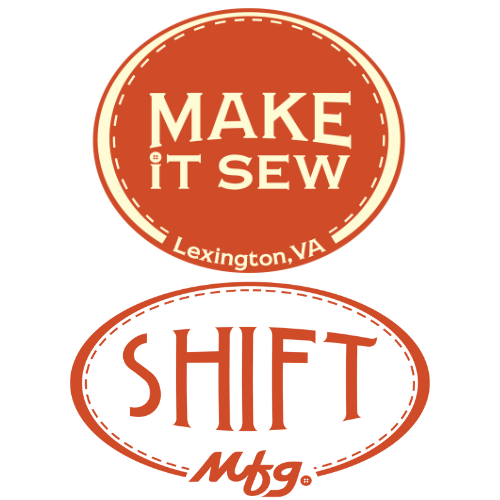Everything Old is New Again (and Even More Beautiful!)
We all know the sadness of that moment when a favorite piece of clothing, which was getting a little frayed around the edges, finally becomes unwearable. It’s closely related to discovering moths have been feasting on a treasured coat or suddenly hearing a ripping sound when you’re all dressed up and ready to go. Ugh.
Here at Make It Sew, though, we try to embrace the Japanese concept of wabi -sabi, which celebrates impermanence and the beauty of aging, scars, and imperfections. Over the next few weeks, Make It Sew is offering two opportunities to learn techniques that you can use with new materials but which were originally created to salvage or re-purpose damaged and worn items.
During a daylong workshop on July 6, Theresa Reid will teach students how to “reverse applique,” a technique pioneered by designer Natalie Chanin, eco-conscious founder of Project Alabama and Alabama Chanin. Attendees will learn how to design a stencil, paint and cut fabric, and then sew different stitches to create a reverse applique sampler from knit fabrics that do not fray. Most students will opt to use new materials to create their projects, but Chanin frequently included recycled t-shirts and other salvaged fabric when she first introduced the technique in the early 2000s. Reverse applique is a dazzling way to remake worn-out favorites into something new to love.
Make It Sew fan Laura Parsons’s much-loved top from Natalie Chanin’s Project Alabama. It is made entirely from repurposed materials.
A sashiko embellished coaster similar to ones students will make during the “Sashiko Basics” session of Grownup Summer Camp.
A month later on August 7, Make It Sew’s own Accacia Mullen will teach “Sashiko Basics” during the final session of Grownup Summer Camp. Although campers will focus on crafting either coasters or sachets using new fabric, this Japanese embroidery technique originated as a way to prolong the life of clothing and other household textiles. The repetitive geometric patterns, traditionally sewn with white thread, not only repaired and strengthened thinning and ripped areas, they also added a new level of beauty to the original objects, which is the essence of wabi-sabi!
Robe, unknown, 1850 – 1900, Japan. Museum no. FE.27-2015.
© Victoria and Albert Museum, London




